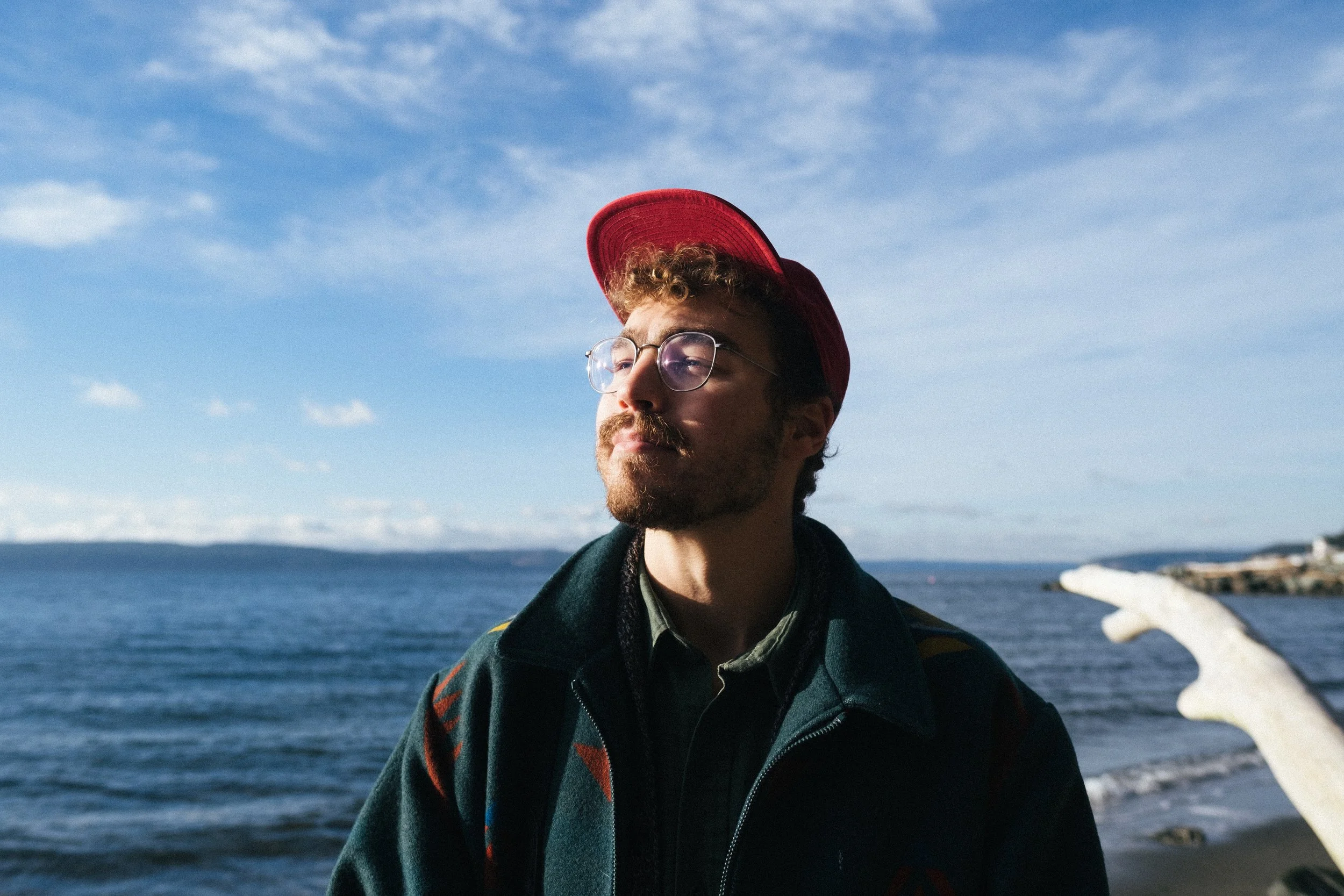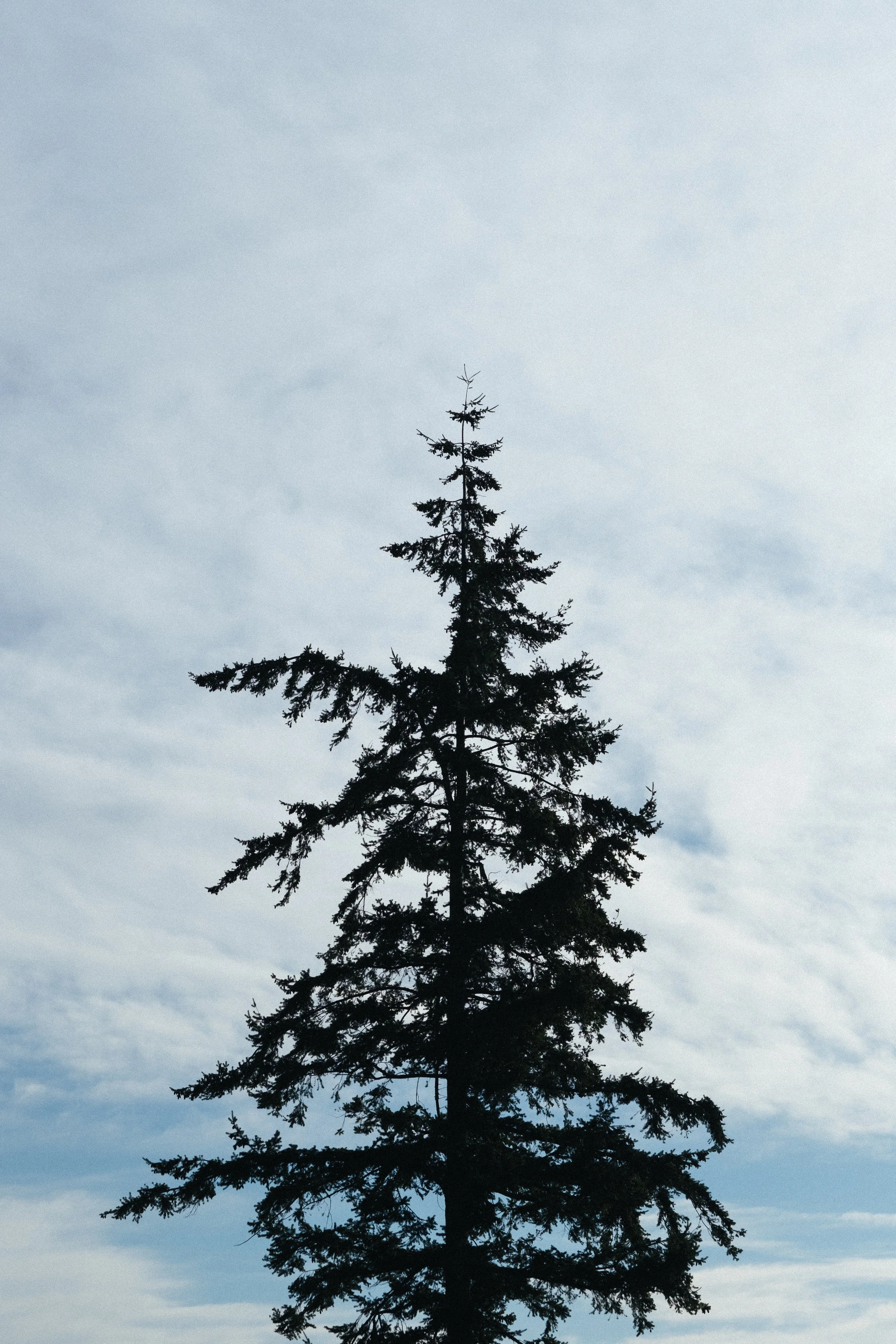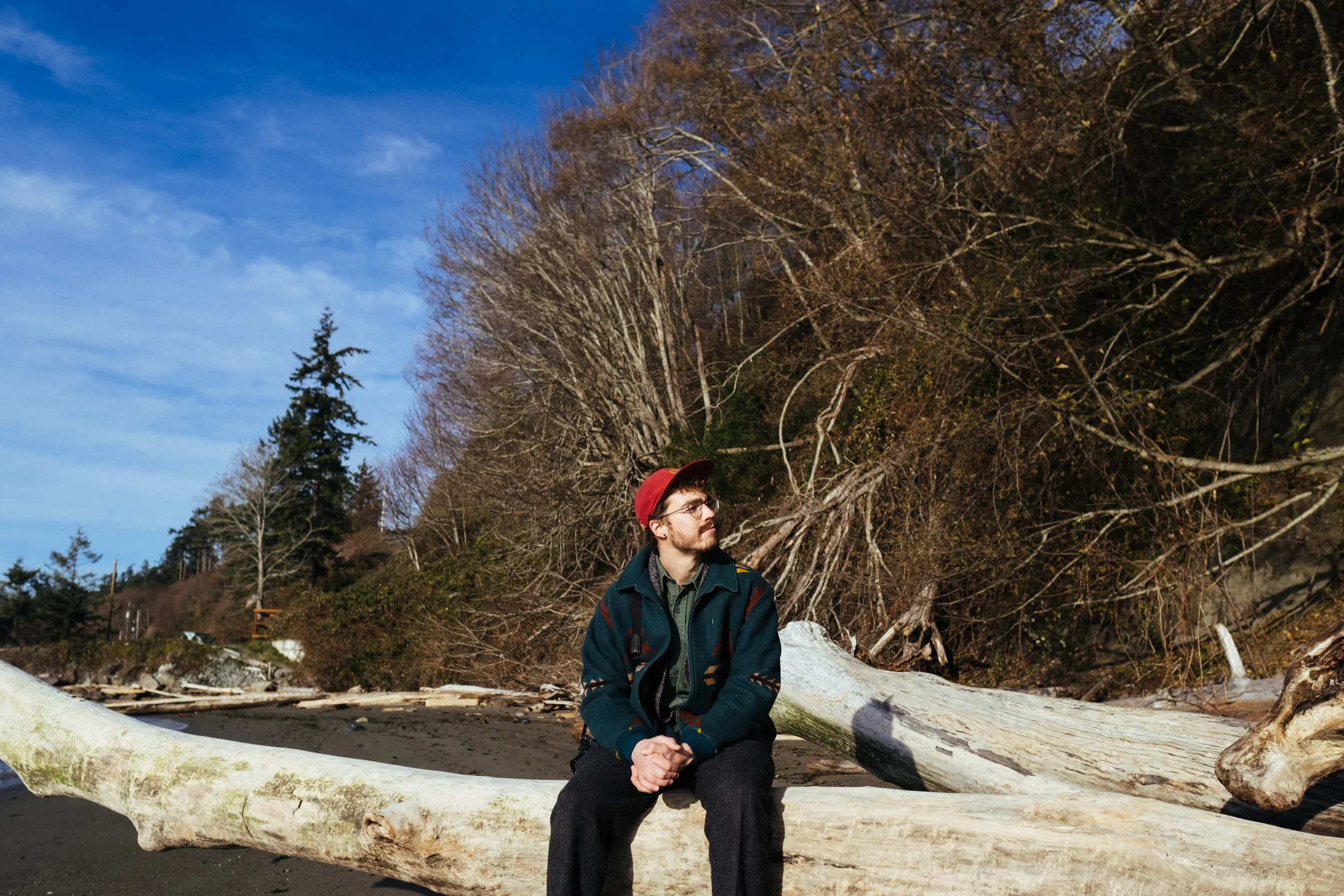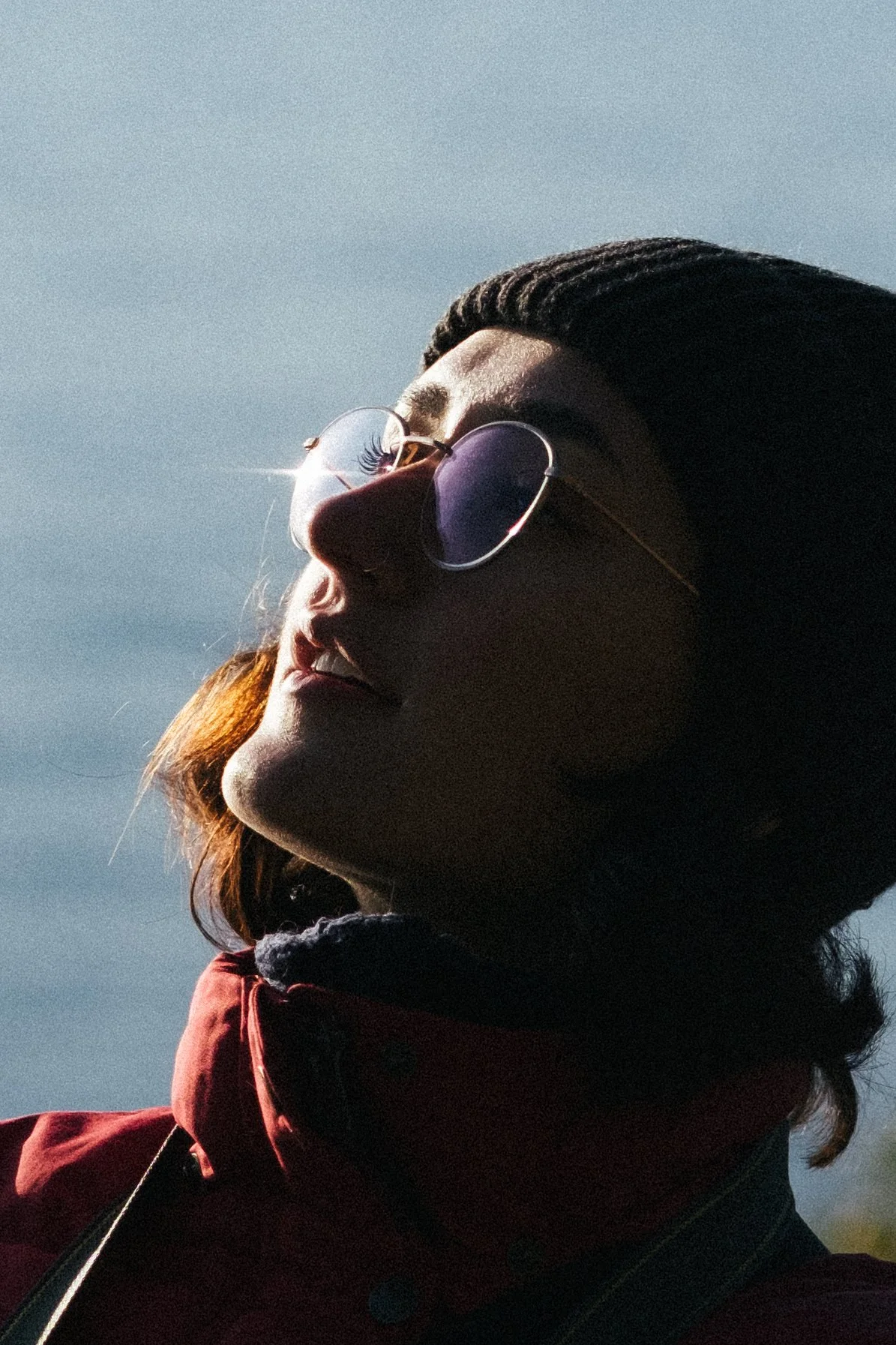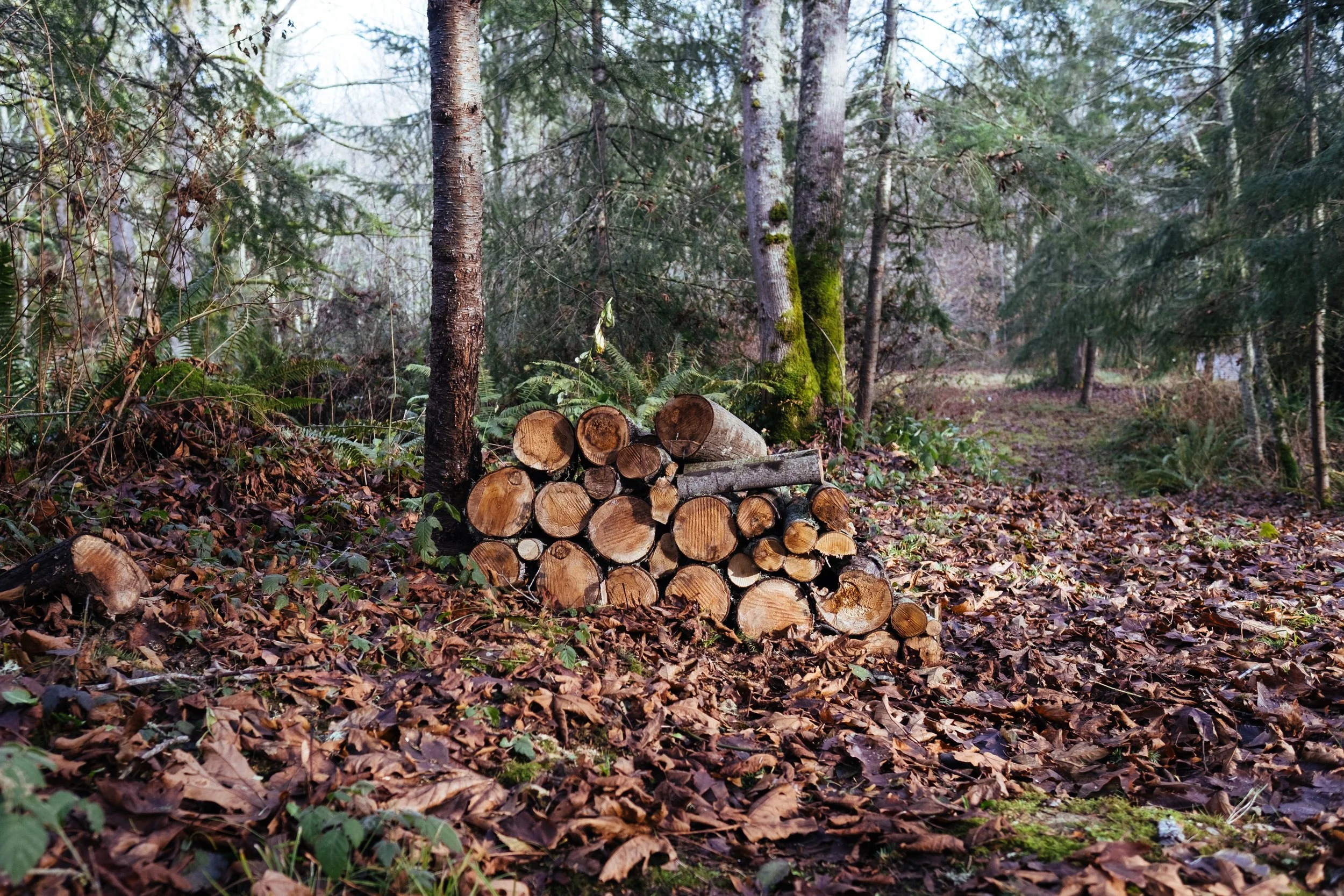Creativity Without an Agenda
Photo by Mary Kibala (Fujifilm X-Pro3, 16mm f/1.4)
You know how you have your best thoughts in the shower? It’s because you’re trapped in there.
It’s the one time of the day where you have nothing to be urgently doing, and so you accidentally have a few moments where you’re free to just exist. If you feel boredom, there’s no option to grab your phone or strike up a conversation with someone around you. You’ve trapped yourself in a space where there’s no option for external stimulation. This is something a lot of us would normally be terrified of, but instead of it being the worst part of the day, it’s where we have our best thoughts. Weird.
The Puget Sound is seen from Camano Island (Fujifilm X-Pro3, 16mm f/1.4)
I’ve been thinking a lot about what Sean Tucker calls “agenda-less alone time” in his book The Meaning of Making. Our time in a the shower is an example of “agenda-less alone time”, and he says that if we can learn to stop fearing unstructured time alone, and maybe even learn to enjoy it, we will be far more likely to find our individual truth and creative voice. He uses the metaphor of inspiration as a “creative in-breath” that comes from this time.
I think we’re scared of being alone because we might start to notice things we don’t like about ourselves. It’s a lot easier to hide from yourself when you’re always rushing to the next thing or listening to someone else’s thoughts. It’s when we’re alone with nothing to distract us that we can learn to understand who we really are, and accept it, and maybe even think how we could change for the better.
South Camano Island (Fujifilm X-T2, 56mm f/1.2)
I started incorporate small moments with just my thoughts into my every-day life. I tried meditating to wind-down at night instead of watching videos on my phone. I stopped listening to podcasts when walking and riding the bus to work. I stopped listening to music when driving, instead just leaving myself with the sounds of the road and the cars around me. I didn’t force myself to any strict rules about what to think about, since that would defeat the purpose. There is an immense and underappreciated intrinsic value in doing nothing, and viewing a specific goal or structure would go against the very nature.
And I think it’s magic. I go in with no expectations and it could change my life. I go into the shower expecting nothing and I might have a world-changing idea. And it happens not because I expect it, but paradoxically because I have absolutely no agenda.
A cozy cabin interior on Camano Island (Fujifilm X-Pro3, 16mm f/1.4)
Sean, the author or The Meaning of Making, practices what he preaches. He rents inexpensive vacation cabins and goes on what he calls creative retreats for a few days at a time. The first time I came across his work was in a video where he was reflecting from a cabin in Wales. He had forced himself to try his hand at landscape photography in a new place, and after a series of failures to take images he was happy with, he found himself with something to say about his experiences. He wrote a quick script and filmed a few shots talking-to-camera, and edited together his first video: A (bit more than a) Landscape Photography Tutorial: Snowdonia. This video would serve as his online launching-off point, and has been an accurate model for how Tucker has made and shared his work for the past 6 years.
Sean went on his cabin retreat to spend time with himself and his art, and accidentally launched a successful philosophical photography YouTube channel that would change his and many of his viewers’ lives.
Photo by Mary Kibala (Fujifilm X-Pro3, 16mm f/1.4)
I wanted to book a cabin for myself life Sean did. I went on AirBnb, found a place, figured out which days to take off work, and started to make a rough plan. I was going to be uncomfortable in the best way, and was looking forward to feeling happier and more content as myself and in my own head. I was excited to finally take action on something I deeply believed in, and something I had been putting off for years. It was finally happening.
But I wimped out.
I never booked the cabin. I got a combination of overwhelmed and distracted and never followed through. The next thing happened, and with the next urgent activity to rush to, I was swept away. The very thing I was trying to avoid, the rush of day-to-day life, was exactly what kept me from escaping.
(Fujifilm X-T2, 56mm f/1.2)
Let’s be realistic. Sean is a 40-year-old introvert, and actually following through on a trip like would go against so many habits in my seemingly-always-busy life. I can passionately preach the importance of a solo retreat, and truly believe it, but it is very unlikely I am actually going to take one.
So I cheated, and I brought a buddy.
Well, actually two.
Mary prepares a meat and cheese board (Fujifilm X-Pro3, 16mm f/1.4)
It was Mary, and her cat Bruce, who were the reasons I actually left and spent time in a cabin far away from home. It was their companionship, with a mutual understanding of the importance of time with our own thoughts, that brought this experience from theoretically beneficial to an actual lived experience that I can look back on and cherish.
I took the rest of the week off work, and we arrived at our location Wednesday evening hungry and in the dark. We had grabbed some cheese and crackers on the way at the island’s main grocery store, and as we settled into our new temporary home, Mary arranged our snacks onto a cutting board. This extremely simple activity is a good representation of the level of excitement and stimulation we would experience the next few days. In other words, we did almost nothing. We ate, I read to her from The Meaning in Making, we listened to music. Everything was quite simple, a feature of a vacation I’ve never experienced before.
(Fujifilm X-T2, 56mm f/1.2)
The experience we’ll remember the most is our photo walk, because it’s inherently memorialized in its own images. I brought two cameras and had the idea Thursday to explore the area around our cabin, taking photos along the way.
I explained the differences between our cameras and lenses to Mary. She had the wide lens, and needed to think of her entire surroundings when taking an image because everything around her would be in the frame. I had the tighter lens and would be focusing on specific elements, and needed to be very selective with what I chose include in my limited point of view. Together, we could think about the big picture composition and also specific details.
Photo by Mary Kibala (Fujifilm X-Pro3, 16mm f/1.4)
Much of our walk was spent playing with our cameras and seeing what we could capture around us. It was a lot of quiet problem-solving, adapting to the difficult creative constraints of too-wide or too-tight focal lengths and the extraordinarily harsh lighting of the midday sun. At times it was hard to keep our own eyes open, as we squinted the light wasreflected at us on the Puget Sound.
We made our way down to the beach and walked up and down the shoreline, checking out the boathouses that lined the coast in various stages of abandonment.
(Fujifilm X-T2, 56mm f/1.2)
We spent the remainder of the afternoon importing and editing our images and thinking of ways to sequence them together to tell a story. We noticed common elements of symmetry and shadows, and talked about what it meant that we were drawn to that composition and exposure.
We were proud of our work and excited to share our photos, and importantly not because the goal was always to share. We went on a walk expecting nothing, and on this particular day came out with photos that said something, a message we wanted to tell our friends. It’s extremely important that I don’t remember this trip just a photo opportunity or time to improve my chess game. I went in with the intention of stopping the endless cycle of “go” that comes with every-day life, and just being. And being open to any creative thoughts that came our way.
(Fujifilm X-Pro3, 16mm f/1.4)
It wasn’t true agenda-less alone time, but these few days had less agenda and fewer people around than almost any other period in the past year. And that’s huge for me.
Just like Sean, I went into my cabin away expecting nothing, and magic happened. I took photos that can serve as a model for how I want to create and share my work in the future. I learned that if more days are spent going on walks, adapting to creative constraints, and sequencing my work to tell a story, I will become a confident and meaningful artist. And I don’t need any more agenda than that.
Matt Repplier is a 25 year old software engineer who loves photography, reflection and friends. This blog serves as his creative outlet and space to consider his experiences.
This essay was inspired by the work of Sean Tucker.
